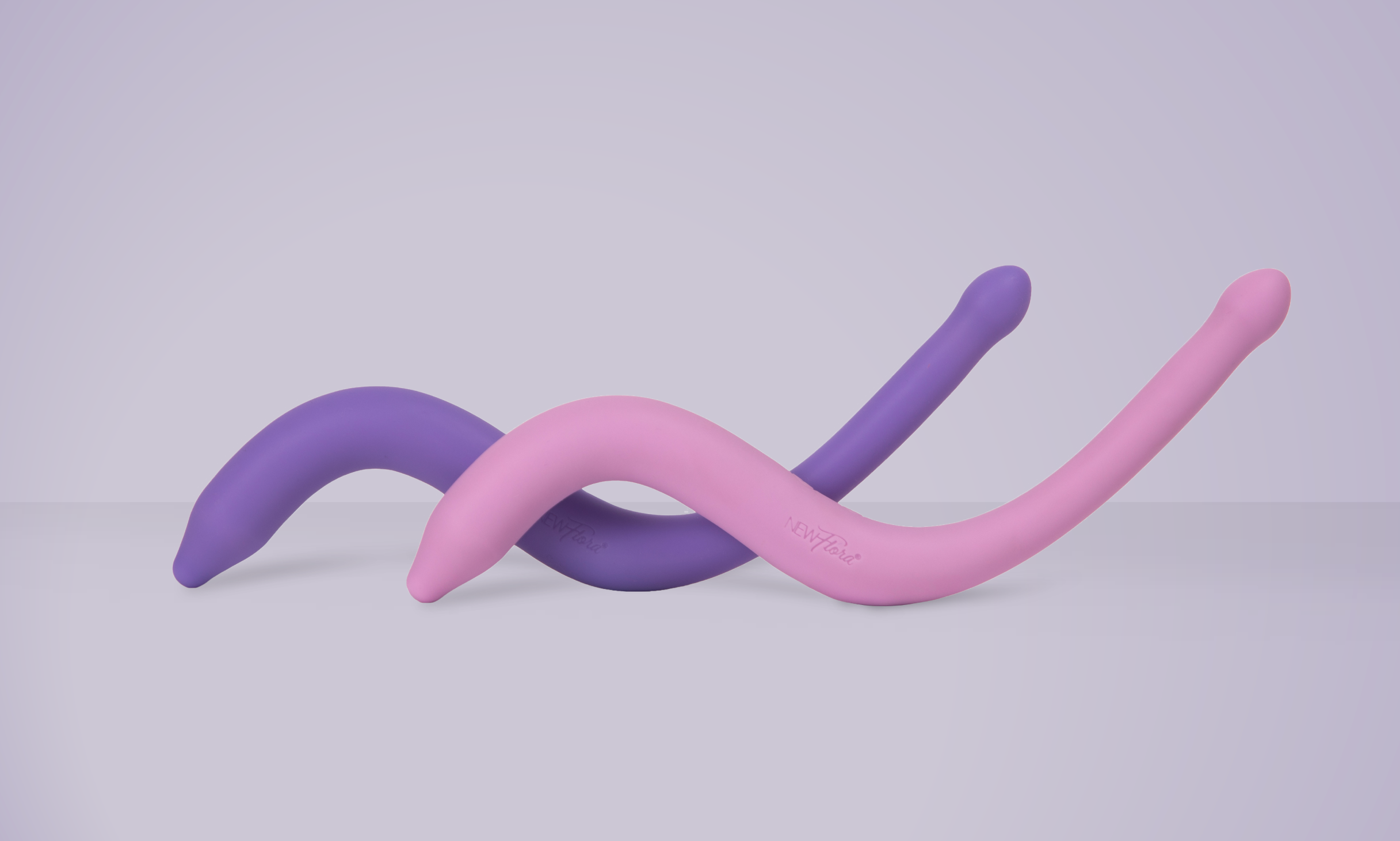If you are experiencing pelvic pain, the answer is probably yes, you would benefit from using NewFlora’s pelvic wands! Pelvic wands are different from vaginal dilators and can be used for all genders, and our wands are designed to address both vaginal and rectal issues. Vaginal dilators are primarily focused on women’s health issues, but we cannot forget about the other 50% of the population that does not have a vagina! So if you are a male and experience pelvic pain, there are tools for you as well!
Both pelvic wands and dilators are used to address myofascial pain or myofascial trigger points (MTrP), which is pain that is generated from the musculoskeletal system and fascial restrictions. Fascia is a type of connective tissue that is found throughout our entire body and often present when there is muscle dysfunction. The difference between pelvic wands and dilators is that dilators are often recommended to improve penetration and stretch the muscles around the opening of the vagina, and in some cases the rectum. Vaginal dilators however, are limited in their ability to fully reach deep inside the pelvic floor and the side walls, whereas pelvic wands are shaped and designed to reach all of the pelvic floor muscles.
Associated Symptoms
Below is a list of potential symptoms and diagnoses that would benefit from using a pelvic wand:
- Pelvic floor dysfunction involving tight muscles (see our blog on types of pelvic floor dysfunction here).
- Vaginismus
- Painful intercourse (especially pain with deep penetration)
- Painful urination
- Painful bowel movements
- Pain with anal penetration
- Chronic prostatitis/Chronic Pelvic Pain Syndrome (CP/CPPS)
- Genital pain (penile pain, vaginal or rectal spasms)
- Tailbone pain
Myofascial Trigger Points & Pelvic Floor Dysfunction
Myofascial trigger points are essentially tight bands of muscle fibers that occur for a number of reasons including injuries, postural imbalances, and overuse. These areas are often tender and are a source of referred pain. When we talk about myofascial pain and pelvic floor dysfunction, essentially any dysfunction from the ribs downward may impact the pelvic floor. It has been estimated that 85% of patients suffering from urological, colorectal, and gynecological pain syndromes have myofascial trigger points. The tricky thing about these trigger points is that often they refer to pain in other areas like the genitals, or bladder, or rectum. Our brains like to make sense of pain, so we think that these are the problem areas, when in reality, these areas are just what we perceive to be problematic.
Myofascial trigger points are typically treated with trigger point release techniques. This may include a pelvic floor PT performing both external and internal release techniques involving finding the tender spot, applying sustained pressure which results in a change in pain (usually within 60 seconds), but may also be treated with dry needling or trigger point injections.
Myofascial trigger points in the pelvic floor muscles are similar to other areas of the body. For example, if we are having neck pain or headaches and we get a massage, the therapist may work on the surrounding muscles and our symptoms may go away. The pelvic floor muscles are no different, though the resulting pain often feels more alarming and can mimic signs of infections. Combine this with the fact that we often don’t talk about this area of our bodies, many people feel isolated and don’t know where to go for help.
The majority of people with pelvic pain often undergo testing or imaging to rule out infections or sexually transmitted infections (STIs), some are even treated for these despite no infection being found! If you suspect an infection or are worried, it is important to rule this out, but oftentimes findings are normal and treatments don’t work, because they have myofascial pain. Ideally they would be referred to a pelvic floor physical therapist or find one through their own research, and begin a treatment plan that often includes the use of pelvic wands or dilators as part of their home program.
If you suffer from pelvic pain or have been diagnosed with one of the above conditions, it is likely that you are experiencing myofascial pain and our pelvic wands can be helpful as part of a comprehensive treatment program. Additionally, seeing a pelvic floor PT can help you to best understand your personal situation and help create a treatment plan. To learn more about pelvic floor PT and what to expect, read our blog here.
NewFlora offers both pelvic wands and dilators for men and women, designed specifically to address these issues. Ask your provider if NewFlora products are right for you and click below to see what makes us unique!
- Moldwin, R. M., & Fariello, J. Y. (2013). Myofascial trigger points of the pelvic floor: associations with urological pain syndromes and treatment strategies including injection therapy. Curr Urol Rep, 14(5), 409-417. https://doi.org/10.1007/s11934-013-0360-7





